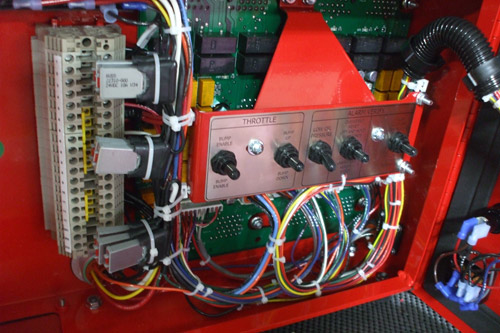Wire harnesses are bundles of electrical wires that each have their own individual covering but are also bound together using an additional outer covering. The term wire harness is sometimes used interchangeably with cable harness or cable assembly, though there are subtle differences between them. In this blog, we will discuss everything you need to know about wire harnesses, including what they are, how they are used, and how they are manufactured.
What are Wire Harnesses?
Wire harnesses are bundled processed wires with a protective covering to guard against wear and tear due to environmental conditions and other potential damaging factors. They may have a protective sheath around the wires that is typically made of thermoset or thermoplastic material, which provides additional protection against damage to the individual wires. These harnesses are important because they organize wires for easy implementation into equipment and systems. Wire harnesses oftentimes get confused for
cable assemblies. Wire harnesses typically provide a bunch of cables and wires with some degree of protection and keep them organized, while cable assemblies bind multiple covered wires tightly with a covering to provide robust protection suitable for more demanding environments. Despite the product names, both cables and wires may be found within wire harnesses and cable assemblies. Wire harnesses offer a range of benefits, such as:
- Optimizing space by grouping wires together
- Facilitating customization for specific application needs
- Providing extended service life on cables and wires
- Improving equipment safety
- Availability in a broad range of sizes and lengths
What are Wire Harnesses Used For?
Wire harnesses are used in far too many applications to list here, but here are some specific examples of notable use cases for wire harnesses:
- Automotive. Wire harnesses are used in vehicles for a variety of purposes, such as relaying information, signals, and electrical power.
- Flight simulators. Flight simulators use wire harnesses to transmit energy and information in accordance with various performance standards and tight spacing requirements.
- Flat panel displays. Flat screens incorporate wire harnesses to keep wires organized and to mitigate electromagnetic interference.
- Heavy equipment. Wire harnesses are incorporated into most heavy equipment used in construction and a variety of industries.
- Ruggedized computers. Ruggedized computers used in harsh industrial or military environments often incorporate wire harnesses and cable assemblies to protect internal wires from dirt, dust, moisture, and other elements.
These examples only make up a tiny fraction of relevant use cases for wire harnesses, which see extremely broad usage across major industries such as appliances, construction, heavy and industrial equipment, electronics, military and defense, medical equipment, and many others.
How is a Wire Harnesses Manufactured?
The manufacturing process for wire harnesses can go from basic to very complex. It starts with the design process and making sure that the harness incorporates any necessary custom features for its intended application. The next step usually involves wire cutting, stripping, and terminating. The wires are stripped and cut at the right length and metal terminals are attached to the ends of the wires all using a specialized machine commonly known as a crimp center. If needed, the wires will then be inserted into a connector
housing, allowing the mating of male and female bundles of wires. Some wires will remain outside of connectors and attached to the original equipment individually. Finally, the cables or wires are bound with an outer covering using an assembly board, which guides proper breakouts and allows for final electrical testing. Manual assembly is still the most common method for wire harness manufacturing because routing cables or wires through sleeves is an extremely delicate process. Manual operations for wire harness assembly include:
- Applying fabric tape in varying locations and amounts
- Crimping terminals onto wires, which sometimes requires multiple crimping operations
- Inserting one sleeve into another
- Fastening strands of clamps, cable ties, or tape
Wire Harness Manufacturing by PMCI
At Precision Manufacturing Company, Inc. (PMCI), we work with clients from
wire harness design and schematic development into prototyping and production. Our wire harnesses are offered as a turnkey solution, which includes every process from conception through installation. We submit every wire harness to electrical safety testing to ensure it is safe for use. Our
wire harness assembly services include:
- Multiple wire and cable integrations
- Custom configuration
- Quick installation
- 100% fit, form, and function validation
- In-line wire and cable marking
- Harness sub-assembly prefabrication
- Ultrasonic welding for in-line wire splicing
Please
contact us or
request a quote for more information about our wire harness options and capabilities.

